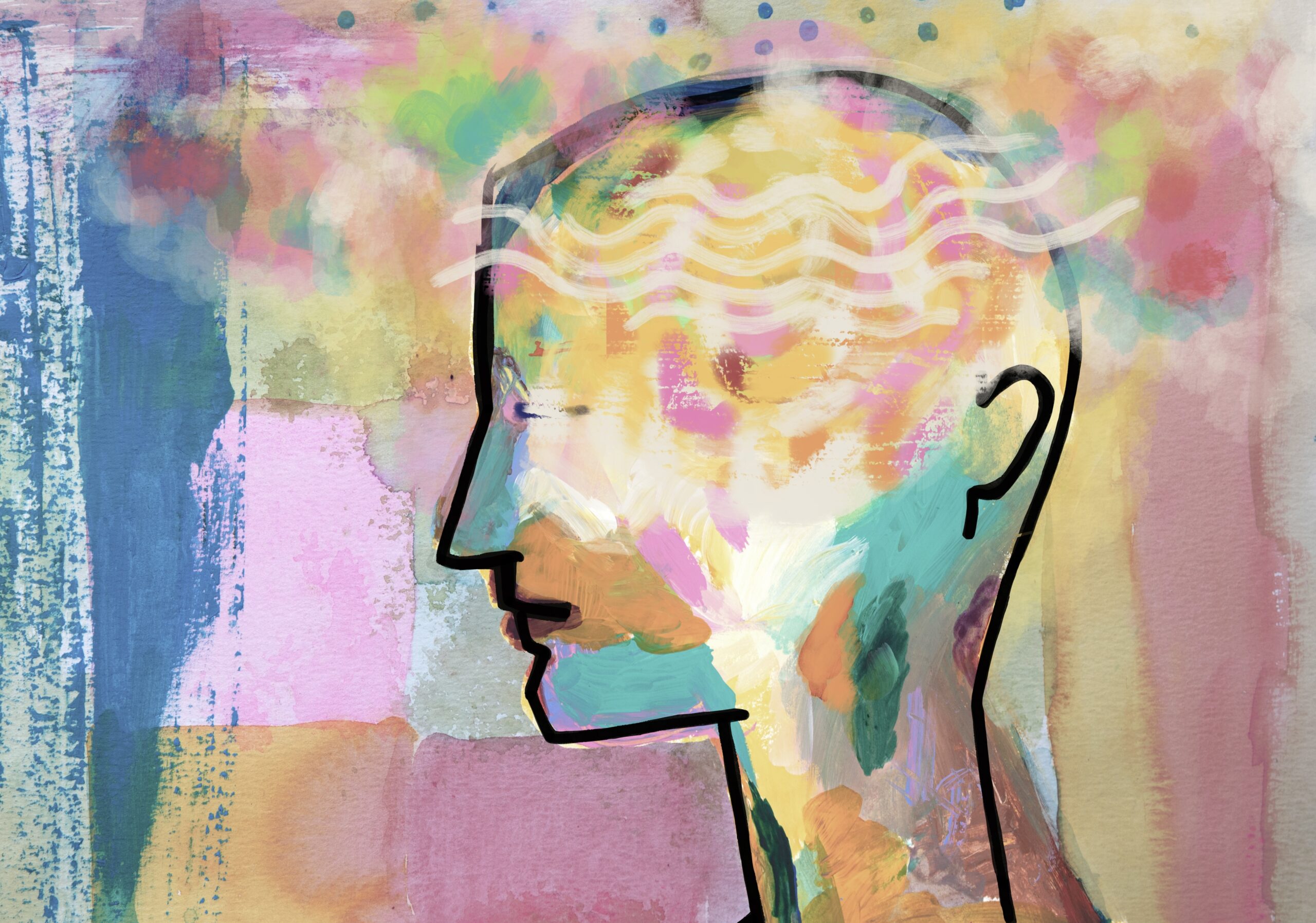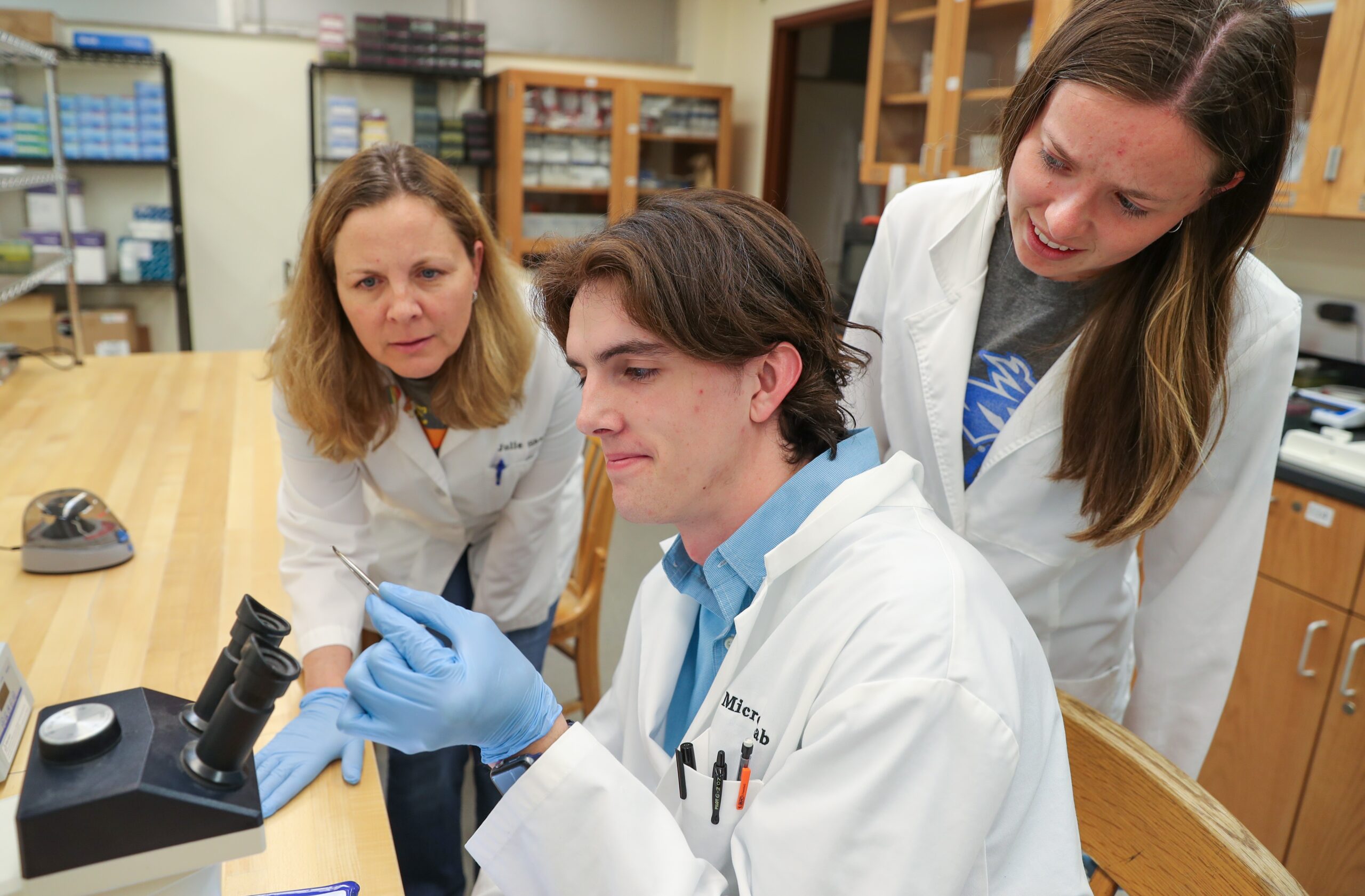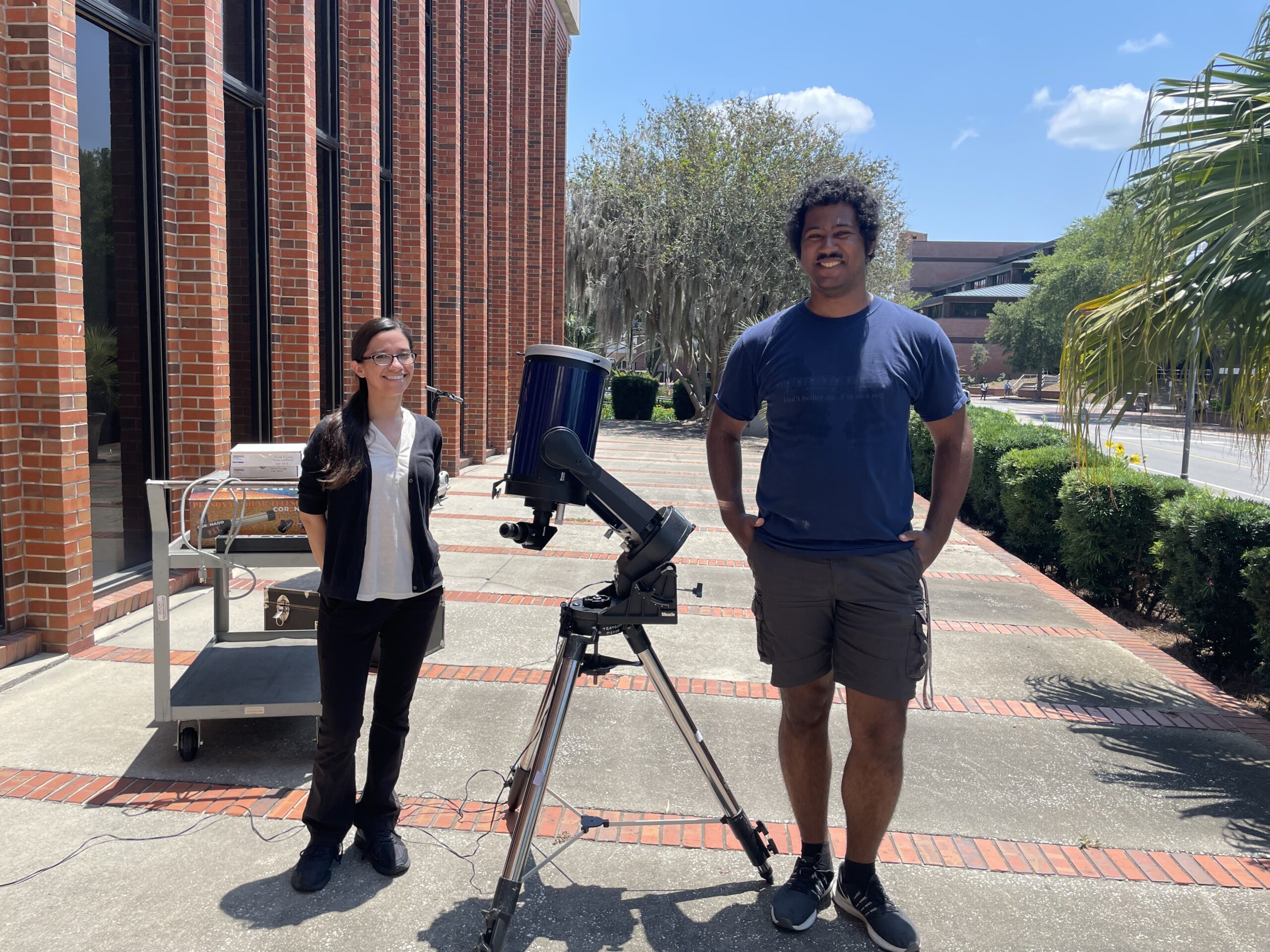Around the turn of the century, psychiatrist Holly Rogers noticed an emerging trend among her student clients at Duke University. Many of them were coming into the student counseling center with a variety of mental health problems driven by what seemed to be a lack of resilience; an inability to sit with discomfort, distress or disappointment. She concluded that helping her students develop the coping skills needed to confront these emotions would lead to a myriad of benefits, including alleviating what would soon grow to be a capacity crisis at college counseling centers across the country.
Nearly a quarter century later, Rogers’ professional observation has become a personal mandate to help address some of what today’s college students are struggling with – including anxiety, depression and loneliness. She is even more convinced today that practices such as mindfulness can help many college students regulate their own wellbeing in a world that has only become more stressful. She and her colleague, Libby Webb, the former associate director of counseling and psychological services at Duke, founded the Mindfulness Institute for Emerging Adults (MIEA) to bring the evidence-based program in contemplative practices developed at Duke to colleges and universities around the country.
“Something more has got to be done,” said Rogers, MD. “There needs to be a top-level paradigm shift to change the culture on our campuses so we don’t have academic success over here with all its metrics and then ‘here’s a few things we do for wellness.’”
Rates of anxiety and depression reported by college students have been on the rise for more than a decade, and the responsibility of addressing the crisis has been largely laid at the door of college counseling centers. But capacity problems have coincided with a growing recognition that subclinical emotional issues can and should be addressed by opening up the circle of care on campus, and that combatting the college mental health crisis requires adding a preventative, public health approach, along with a treatment response. Enter mindfulness.


Like many ubiquitous terms, mindfulness could stand to be better explained before it can be fully embraced. Based on age-old contemplative practices found in most religions, notably Buddhism, mindfulness is defined as a mental state achieved by focusing one’s awareness on the present moment, while acknowledging one’s feelings, thoughts, and sensations. Its broad appeal in today’s frenzied world is its ability to calm the mind through practices such as mindful breathing, meditation, body scans, and intentions of gratitude.
“Mindfulness is the skill and capacity to bring our minds to the present as opposed to galloping towards the future or dwelling in the past,” said Webb, MSW. “And doing so with a non-judgmental awareness of where our minds tend to go. You just notice it and bring your attention back to the present.”
Mindfulness has become a big business, complete with YouTube channels and celebrity endorsements, and it is clear the practice can work for people of any age. But Rogers and Webb believe it is particularly beneficial for emerging adults: traditional college-age students who are navigating emotional land mines such as test anxiety, social media-induced self-doubt, and vulnerability to substance use. “What we know about this developmental stage is that it is filled with ambiguity,” said Webb. “‘Who am I? What do I care about? Who am I going to love?’ And we know that the brain doesn’t like ambiguity. It detects a threat, so it’s a time of high unease.”
Webb says that because their brains are still fluid, young people are more adept at flexing into other patterned behaviors if exposed to them. Skills-based practices like mindfulness can calm their brains, which helps them make better choices, examine their purpose, and identify what is important to them. In 2023, the American Council on Education strongly endorsed mindfulness programs with supervised practice in its report, “What Works for Improving Mental Health in Higher Education,” adding to a strong body of evidence already in the literature.
“Research is showing us more and more that this capacity to be in the moment reduces suffering and improves attention,” said Webb.
For several years, Duke offered the program developed by Rogers and her colleague Margaret Maytan, MD, in the form of a four-week, opt-in course, involving a teacher and group discussion. While it was slow to catch on, it eventually took on waiting lists. They called it Koru, a Maori word used for an unfurling fern frond symbolizing stability in the center of unfolding growth. With refinements to the curriculum over the years, they began an effort to assess its effectiveness in 2012. The results of its randomized controlled trial were published in the Journal of American College Health and became that publication’s most downloaded article in 2014, around the same time the Healthy Minds survey showed a solid upward trend in mental health problems among college students. In the trial, students who had taken Koru reported a reduction in stress, an increase in restfulness, and a greater sense of self-compassion, among other findings.
Skills-based practices like mindfulness can calm their brains, which helps them make better choices, examine their purpose, and identify what is important to them.
Interest in practices like Koru on college campuses has grown steadily since then, motivating Rogers and Webb to leave their positions at Duke to focus full-time on expanding the program through a “train the trainer” model. Individuals from other universities began coming to the center, recently renamed MIEA, in Durham, NC, where they receive training to become MIEA-certified teachers and then go back to their campuses and offer the courses in a variety of forms.
Since the pandemic, MIEA has offered the certification program online, which has accelerated the number of schools and individuals participating in the program. Rogers said that MIEA has now trained 1,500 teachers in 14 different countries and taught over 70,000 students. Institutions range from the Ivies to community colleges. You don’t have to have a clinical background to become a MIEA teacher, only some background in contemplative practices. If you don’t, they will help you cultivate one.
MIEA’s first non-Duke client was Harvard University, which continues to offer a variety of classes each semester and has 12 MIEA-certified teachers within its Center for Wellness and Health Promotion. “I have been teaching MIEA classes for over 10 years,” said Amanda Ayers, MPH, Harvard’s Director of Health Promotion. “It is such a joy to see the changes that students make in just four weeks. They are able to be more present in their everyday lives, spend less time on social media, and are kinder to themselves.”
How mindfulness practices are taught and who chooses to teach them illustrates their versatility and low barrier to access. In an environment as siloed as a college campus, mindfulness curriculum like that offered through MIEA can weave through departments and requirements – a credit-bearing course here, an elective there. Mindfulness teachers are often connected to traditional fields like health promotion but can include anyone in any discipline who sees the value of improving student wellbeing. Evidence on the connection between mindfulness and attention attracts professors and academic advisors worried about student disengagement and burnout.
“You can embed this curriculum into your first-year seminars, your physical education classes, or as an extra credit elective,” said Rogers. “We have faculty in business schools who are offering the curriculum in conjunction with their academic material.”
The individualized nature of the MIEA program is both an advantage and a challenge. The curriculum, which comes with an app and a teacher dashboard, takes different forms at different price points. To date, MIEA’s business model is to sell the program to individuals within schools such as faculty or staff working in the wellness center who might use professional development funds to pay for it. Rogers points out that this case-by-case model lacks the consistency and traction needed to make mindfulness a universal benefit. Professors get busy. Funds dry up. The team is now offering the MIEA program directly to institutions at a much larger scale, hoping the urgency of student mental health will spur a university-wide commitment to wellbeing.
“We’re asking universities to make a commitment both to us and to their teachers if they want to really make a difference on their campus,” said Rogers.
Mindfulness in Action
Eric Teske directs the Office of Health and Wellness Promotion at Indiana University, Indianapolis. His interest in the MIEA program came from his desire to “take pressure off of the counseling center” by offering a program that could be taught by trained teachers to students who could be helped in non-clinical contexts. After hearing a presentation by Libby Webb during the pandemic, Teske was determined to get a number of people on campus trained and certified through MIEA. Making it a free professional development opportunity was an added incentive. He funded the trainings through a grant from the state’s Division of Mental Health and Addiction.
“In helping students understand their own thoughts and feelings, we are equipping them with self-regulatory skills, self-management, and that is all part of alcohol and drug prevention,” said Teske, MS, CHWC, who urges institutions in other states to explore the use of similar public funding.
The person who brought Libby Webb to IU was Nancy Barton, MS, a senior lecturer in the School of Health and Human Sciences’ Department of Kinesiology. With a background in meditation, Barton had been interested in becoming MIEA certified but didn’t find the time to pursue it until the pandemic,when the online option provided an opportunity — and even more students were reaching out for help.
“Once I got it [the certification], I really wanted to work with my university to see it take off,” she said. “So many people would say to me, ‘I am really worried about the mental health of my students, but I don’t know what to do.’ Now I could say,‘here’s something you can do.’”
Teske and Barton were part of the university’s Wellness Coalition, an ad hoc group of wellness enthusiasts who informally met to strategize about tactics to use on campus. Another member was Lisa Angermeier, PhD, MCHES, a senior faculty fellow in the Institute for Engaged Learning, which focuses on first-year experience and high impact practices. Together, they led an effort to embed the MIEA curriculum as a pilot program into selected sections of the first-year seminar. Now, the course is not just a credit-bearing option in the Department of Kinesiology, but a required course for first-year students.
“We wanted to offer students more tools, right from the beginning of their college experience to help them deal with the stress they will encounter,” said Angermeier. “But we also see this as something they can take with them and use for the rest of their lives.”
An assessment of the program indicates that 62% of the first-year students found the program to be valuable. The team considers this statistic a positive outcome, considering that students do not opt-in to the program. Requiring mindfulness courses is a matter of debate among experts, with some saying it takes away from the self-agency of the practice, but Angermeierviews it as a way to plant a seed of self-care, even for those students who may be reluctant. Equity was another driver.
“Oftentimes with opt-in programs, we see that the students that get there first come in with more social capital while those who lag behind lose out,” she said. “These are the students who often need it the most.”
Valencia College in Orlando, Florida is also utilizing the MIEA curriculum. One of the largest, multi-campus community colleges in the country, Valencia is diverse, both in terms of its students and in the broad range of developmental stages in which they come to campus. Marcia Roman, EdD, ThM, is a counselor and faculty member at Valencia, where she and her colleagues do case management-type work, connecting students to clinicians when necessary and providing workshops and skills-based training. She said the MIEA curriculum “blended beautifully” with their model.
“Our students can learn basic skills that you might even describe as mechanical – like how to breathe in a way that activates the parasympathetic nervous system, which will calm them down – but it’s more than that. For some, it has been life-changing. With mindfulness, they can move through the difficulty in their lives as opposed to all the manner of ways we try to bypass it. And they can do so without tremendous cost and with little risk.”
The accessibility of mindfulness is one of its biggest selling points and something Rogers and Webb are promoting before potential higher education clients. Vivien Roman-Hampton, MSW, LICSW, is MIEA’s new Director of Outreach and Teacher Development. Part of her job is encouraging MIEA teachers to become trainers with a particular focus on bringing in people with diverse backgrounds.
Roman-Hampton believes that when colleges and universities offer these services to students of all backgrounds and abilities, it says to them, “We see you and we want to support you.”
“My focus is on ensuring that the practices are accessible to anyone who isn’t what we would call ‘mainstream,’” she said.
Her interest in MIEA is personal. A clinician who works with clients from marginalized communities and is from one herself, Roman-Hampton was drawn to MIEA’s work because of its low cost and long-term benefit. “So much about self-care costs money, and that becomes a barrier to people,” she said. But Roman-Hampton initially questioned the lack of diversity among the training staff, which she said would be an issue for her clients. When she expressed her concern to Rogers and Webb, they encouraged her to help diversify the practice, and she joined them officially two years ago.
Roman-Hampton believes that when colleges and universities offer these services to students of all backgrounds and abilities, it says to students, “We see you and we want to support you.”
Asked if mindfulness programs offer a particular benefit for marginalized groups, she said, “I think the practice allows us to sit with things that might be really difficult — like how the world sees us versus how we really are. And while we can most definitely work to create change, it is also exhausting, and not everyone will change as a result. But that doesn’t mean we have to keep absorbing it the way we have historically. Mindfulness is a way to sit with suffering but not let it destroy you.”




